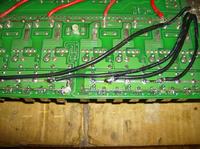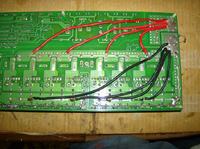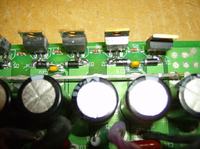sdowney717
Member level 1

I was trying to determine the values for these 2 resistors using this calculator, but one seems to be invalid colors?
I think the upper is .58 ohms and the lower is .28 ohms.
What i want to do is I think lower the value of these two resistors by about 35% which will boost the inverter output by 35% from 1500 watts to 2000 watts which is still below the design capacity of the components. They made this very conservatively, it is fused for 240 amps at 12volts. 8 times 30 amp fuses is 240 amps total. And the mosfets are lots of them and all well rated beyond what this is set to shut down at.
So i was thinking to add two 0.1 ohm resistors in parallel with these both, which will lower the resistance which will lower the voltage drop across these resistors which will make the inverter circuitry think less amps are flowing which will boost the output capability to 2000 watts.
Will that work, or use another value?

I think the upper is .58 ohms and the lower is .28 ohms.
What i want to do is I think lower the value of these two resistors by about 35% which will boost the inverter output by 35% from 1500 watts to 2000 watts which is still below the design capacity of the components. They made this very conservatively, it is fused for 240 amps at 12volts. 8 times 30 amp fuses is 240 amps total. And the mosfets are lots of them and all well rated beyond what this is set to shut down at.
So i was thinking to add two 0.1 ohm resistors in parallel with these both, which will lower the resistance which will lower the voltage drop across these resistors which will make the inverter circuitry think less amps are flowing which will boost the output capability to 2000 watts.
Will that work, or use another value?





